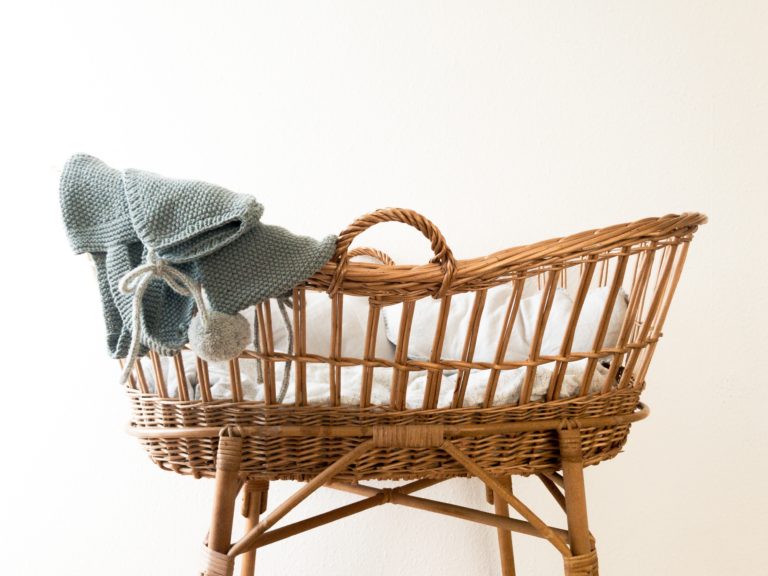During pregnancy, a thickening of the vaginal muscle layer, combined with an increase in the hormone estrogen, will cause the cells in the vagina to multiply in preparation for childbirth. As a result, you may notice an increase in vaginal discharge. This is similar to the discharge experienced during the menstrual cycle; however, during pregnancy, some people need a panty liner or pad (never use tampons during pregnancy) because of the amount of discharge. This is known as leukorrhea. This is perfectly normal throughout pregnancy, and likely more-so in the last few months.
Normal discharge is a white, creamy consistency that is not bothersome. There is no itchiness, irritation, or offensive odor. However, if you do find that you are irritated and itchy, or the discharge is yellow to greenish in color, or if the consistency is thicker possibly curd-like and there is an offensive odor, you may be dealing with an infection. A very common cause of these symptoms may be a yeast infection caused by the proliferation of candida Albicans. Candida is a yeastlike fungus that is part of our normal intestinal flora. They reproduce by budding, and under certain conditions, candida may overgrow outside of its normal habitat. Being pregnant alone may predispose you, so can taking antibiotics, an iron deficiency, or consuming a diet high in refined bread and concentrated sugars. If you are diabetic or develop gestational diabetes, you may be “spilling sugar” through the urine, causing candida to flourish in your genitourinary tract. No matter the specific cause, chances are you will be uncomfortable enough so that you cannot ignore your symptoms. In this situation, you would visit your Ob- or midwife so that you can be properly evaluated, diagnosed, and treated.
Candida itself is not a threat to your health, your pregnancy, or your baby, and it is easily treated. But, it can be passed to your baby during vaginal birth, where it can colonize in your baby’s mouth and then on your nipples (if you’re chestfeeding), creating discomfort and nursing problems for both you and your baby. Treatment usually includes a medication delivered to the vaginal canal via suppositories, gels, ointments, or creams. You may be advised to include a sugar-free yogurt containing live lactobacillus and avoiding foods high in sugar and yeast. It may be suggested that you wear cotton underwear and avoid deodorized soaps and bubble baths.
At the Yinova Center, we draw upon the branches of Chinese medicine to guide treatment using acupuncture, food as medicine, and some remedies in addressing the root and the branch of your chief complaints.
From a Chinese medicine point of view, abnormal vaginal discharge, irritation, and itching would be diagnosed according to the presenting pattern. One such pattern may be Damp-heat affecting the Liver channel, characterized by intense vaginal itching, discharge that is yellow with an offensive odor, and quite understandably, you’ll be somewhat irritable. Another pattern identified as Dampness in the Lower Jiao with Spleen Qi deficiency presents as vaginal itching, with a discharge that does not have an offensive odor, as well as loose stools and fatigue.
At the Yinova Center, we more frequently see the woman who has had an episode or two of candida and is now seeking a way of preventing future bouts of yeast infections. Acupuncture is perfectly safe and is effective in balancing the Qi along the channels of the Liver and Spleen to clear heat, drain dampness and relieve itching during acute presentations and for maintaining a free flow of Qi and Blood through the genitourinary tract. There are several points we will choose from on those channels located on the lower leg.
Next, we will discuss with you the importance of dietary influences on keeping your symptoms in check. Candida, like a yeast, thrives on sugar. If you have ever made bread before the yeast is added to the flour, first it is dissolved in warm water with a little sugar, it begins to puff up, bubble and grow as the yeast multiplies. So, a diet high in sugar within an environment increased in heat and fluids will just create a perfect medium for candida to thrive.
Foods that might contribute to your symptoms
- Obvious sugars – those added to your meals, such as refined table sugar, but also natural sugars like honey, maple syrup, dried fruits, and fruit juices. These selections need to be kept to a minimum, if not avoided altogether. The sugar in fruit juice is often concentrated so you are much better off eating whole fruits that are less concentrated and have more fiber.
- Yeast-based foods like bread, mushrooms, cheese, peanuts, and brewer’s yeast are best kept to a minimum or avoided. Replace these gluten-rich products with gluten-free bread and pasta. At the Yinova Center, we can provide you with additional resources on how to switch out your gluten-rich grain products for gluten-free choices. We also have a list of local restaurants that offer gluten- and dairy-free fare.
- Dairy products, a great source of calcium, proteins, and fats. It seems that most people think the first of dairy products to fulfill their calcium requirements knowing that calcium is important in the baby’s bone growth and development. Dairy is a nourishing, yin–like food, as it is high in fats and protein, but it is also mucus producing which contributes to a damp internal environment.
“Dampness” has a clinging nature, it is slow, produces a feeling of heaviness, lethargy, and fogginess of the brain. Think of a humid environment, where it’s dark, combine that with heat, a little sugar and there is the perfect storm for some kind of life form that may not be in harmony with its host. However, calcium is an important mineral to include in our diet. So while dairy is one source, there are other sources of calcium that will not encourage the dampness that may be predisposing us to these troublesome yeast infections.

Suggested alternatives to dairy that are rich in calcium:
- Green leafy vegetables, especially spinach and broccoli, but also carrots, celery, parsley, and onions.
- Sardines, salmon, and scallops.
- Seaweeds like dulse, kelp, kombu, and agar-agar.
- Nuts such as almonds, cashews, brazil, macadamia, pecan, pistachio, and walnuts.
- Seeds like sesame, sunflower, pumpkin, and linseed.
- Black-eyed beans, chickpeas, kidney beans, lentils (also a great source of B vitamins and replacement for whole grains that are high in gluten).
- Soups made with the bones of fish, chicken, or beef.
Finally, drawing from another branch of Chinese medicine, we will suggest a suitable supplement and herbal remedy to maintain a proper vaginal pH. We have two products at the Yinova Center that are helpful in preventing a recurrence of yeast infections. One is a probiotic from Metagenics that specifically encourages healthy bacterial flora of the genitourinary tract. The other is a wonderful product called Yin Care, which is a gentle, soothing vaginal wash – it’s like a bidet in a bottle.






